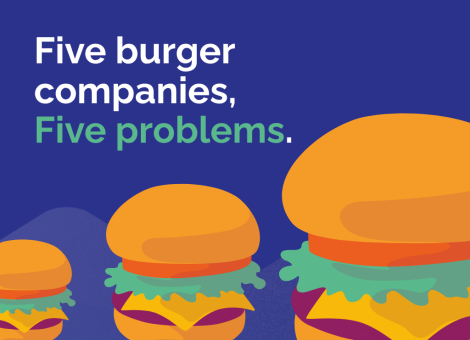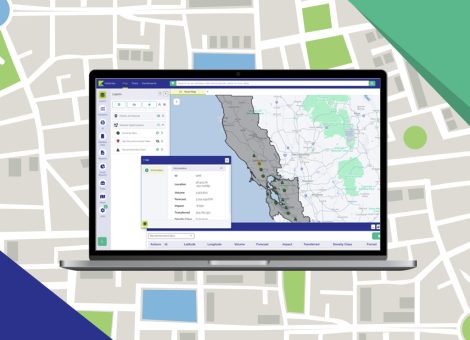Highlights from Kalibrate’s 2020 Virtual User Conference
After a series of 29 virtual sessions across three weeks in July, this year’s Fuel and Convenience Innovation Summit has been a great success! Our user conference was different this year — we took it online for the first time. What remained the same, however, was the leading quality of market insight, analysis, and advice from our experts.
The comprehensive program featured 27 presenters discussing market trends and retailer responses throughout the COVID-19 pandemic. We also introduced the innovations within the Kalibrate suite to improve your network productivity, and invited our colleagues at Kent Group Ltd and TAS to share how their expertise enhances your data intelligence.
The conference saw over 200 attendees and we are delighted to hear such positive feedback:
“The virtual experience has outweighed my expectations.” – Petronas
So now we wanted to look back on some of the key takeaways to leave you in the best position to adapt and thrive. Here are the highlights from our top five sessions:
1. COVID-19: what has changed and what actions should you be taking to ensure you’re adapting to those changes?
The first week of the conference aimed to mitigate industry uncertainty by exploring emerging and existing trends. In one of our first sessions, Beth Thompson (Principal Consultant and Head of Pricing Client Services) and Carlos Palma (Head of Planning Client Services) broke down the patterns of changes and responses to COVID-19 across the market. They shared their market observations, such as a typical volume loss of 80% in the first weeks, along with a substantial package of actionable advice.
With countries and markets recovering at different rates, analyzing your before, during, and after metrics forensically has never been more important. Don’t treat each location the same way — use segmentation to differentiate according to their strategic opportunities, and always support your decision-making with data and science.
Adaptability is key. As the situation changes, be prepared to adapt more than once, and discuss potential scenarios like a second wave. If you’re encountering unpredictable cycles, identify triggers and be prepared to adapt if those conditions reappear. Remember what you know about your markets, and the actions that have served you well in the past, but don’t be too rigid — adapt predetermined responses if the results no longer reflect the desired outcome. Once again, an enhanced focus on data, and the effective application of data science to extract the most useful insights, will ensure your business plans aren’t reliant on estimates.
2. How can you adjust your tactics to protect market share and consumer perception?
This was one of our most popular sessions from the series. Led by Elena Lau and Natalie White (Client Services Consultants for our Pricing Customers), the session explained why a reliance on fuel pricing strategy alone is not enough to protect your market share.
We predict that supply will continue to battle with demand for the remainder of 2020. Considering significant trends including reduced travel and public transport avoidance, global fuel demand is forecast to fall by 8.6 million barrels a day this year. Keeping consumers’ requirements at the heart of business decisions will ensure their needs are met, help you adapt your offer, and reduce the impact of fuel demand demise.
A survey shows fuel prices rank second as the most important factor in choosing a gas station. In fact, cleanliness is the most important common theme of customer concerns — Stations with “above-average” cleanliness ratings drove 17.23% more visits than their “below-average” counterparts in Q1 2020. So retailers who prioritize health and safety are winning new customers, and are more likely to retain them. Using social media to communicate your safety measures will portray your image of purposeful corporate citizenship.
This doesn’t, of course, mean you should neglect your fuel pricing strategy. Monitor the competitive landscape — establish a robust method of capturing market changes, without being the first to divert from market behaviour as consumers are relying on predictability and familiarity. As always, support your decisions with data by performing volume trends analysis and making the most of loyalty data.
3. What should you do to prepare for a return to trading?
This session continued assessing the state of the industry in response to the global pandemic, and how best to future-proof your business. Niels Skov (Chief Commercial Officer) led a panel of experts who discussed consumer behavioural changes, new opportunities, and the next steps you should take.
Changes in customer habits provide opportunities to differentiate your business, particularly by embracing technology for “click and collect”, kerbside collection, or contactless payments. Appeal to customers’ desires to reduce trips by concentrating offers and services at your sites. You can also develop your corporate citizenship image by supporting local retailers and their locally produced goods, as well as considering a drive-through grocery space.
Now is also an important time to scrutinize your data usage. If you lack a loyalty programme that allows you to capture customer shopping patterns in-store and online, you’re almost certainly at a competitive disadvantage. By examining loyalty data, Kalibrate can help you determine customer characteristics, along with their preferred shopping channel. Additionally, reviewing your network will enable you to identify sites which are vulnerable to market disruption or no longer profitable.
4. What are the new features of Kalibrate Planning 3.0?*
Following the launch of Kalibrate Planning 3.0, Elizabeth Kershaw (Client Services Consultant, Kalibrate Planning) shared how our clients can more easily keep pace with their markets using new and improved science, an intuitive user interface, data flexibility, and comprehensive map insight.
Our data models are better than ever. Instead of one model, we now have a library of models with a patent-pending AI selection determining the best to use during the build process, ensuring model accuracy. Kalibrate Planning has the ability to ingest any source of data, including your company’s own data, allowing you to leverage insights from millions of global data points, and reflect specificities within local markets. This technology is future-proofed with the ability to integrate new models into the library, so we can incorporate new scientific techniques as they emerge.
Your map insight is also more comprehensive. Additional map layers, such as advanced visualizations around traffic and demographics, are included as standard. For micro and macro vision across your market, you can include custom layers using your own data. We can work with you to map points-of-interest and understand their proximity to — and impact on — your sites. You also have the flexibility to build in future demands.
We needed to ensure such a complex system had an uncomplicated user experience. So the interface is now more intuitive. Data visualization is clearer, and the tool includes mobile-ready functionality, so customers can access the power of Kalibrate Planning 3.0 on the move.
5. What’s the impact of EV adoption on fuel retailing?
As we continue looking ahead at the future of fuel and convenience retail, Anila Siraj (Senior VP and Head of Kalibrate Data Strategy) discussed the growing electric vehicle (EV) market, and the opportunities it provides to enhance your site offering.
Embracing EVs is an environmental, technological, and economical imperative. Not only is there a global initiative to reduce our ecological impact, but consumer preferences follow technological advancements, and EVs are no exception. With battery improvements including increased densities, and governments offering incentives such as EV purchase subsidies, EVs are increasingly appealing. They’re also becoming more of a necessity, too — already, 13 countries plan to phase out the sales of internal combustion vehicles by 2040.
The EV market, therefore, continues to grow — and you can benefit from these rising sales, forecast to reach 54 million — over half of all passenger car sales by 2040.
So should you consider adding EV charging stations to your site?
Current low utilization rates may lead to longer return on investment. However, as customers will need to be in-store for 30 minutes or more while their vehicle charges, you will be at a competitive advantage if you can provide a quality user experience while they wait. Ensure customers are truly at the heart of your model — understand their preferences, and move to meet them by expanding traditional offers and adjacent segments.
It’s likely to be at least a decade before EVs are commonplace, but there’s pressure on fuel retailers to cater for EV customers — not just by having the right chargers in the right locations, but also the right offer on-site to attract EV business.
A final thank you
These five sessions are only a selection of the extensive range of insight offered by the full conference series. To hear more from our experts answering your questions with invaluable advice to benefit your strategies, access the on-demand sessions here.
We feel proud to continue supporting you through this unprecedented period, and would like to thank you for your engagement. Our friends at Galp told us they are “Definitely looking forward to next year’s event!” — and so are we.
—
*Recordings for product demos and roadmaps are available on request.
Please contact:
Simon Martin
Regional Sales Director – Europe and Africa
Simon.Martin@Kalibrate.com
Read more articles about:
Electric VehiclesSubscribe and get the latest updates
You may unsubscribe from our mailing list at any time. To understand how and why we process your data, please see our Privacy & Cookies Policy
Related Posts
Location intelligence
Five burger companies, five problems
These burger brands had challenges from international growth to understanding franchise locations cannibalization,...

Location intelligence
Market Optimizer: Demo video
Market Optimizer allows users to strategically grow their network in existing markets while balancing revenue...

